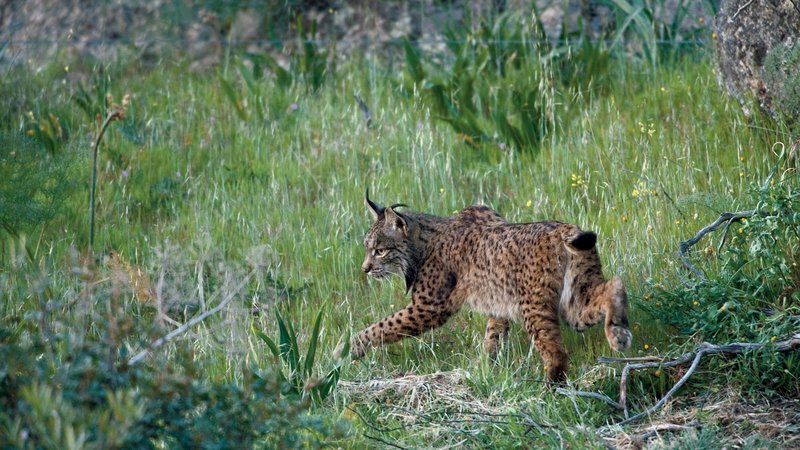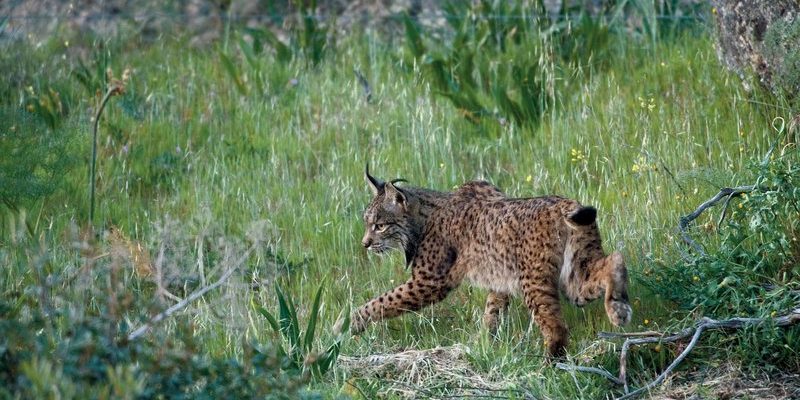
Now, you might be wondering why this lynx is so important. After all, isn’t it just another wild cat? Well, here’s the thing: the Iberian lynx, found primarily in the Iberian Peninsula, is more than just a predator. It helps control species populations, supports biodiversity, and even indicates the health of its environment. So let’s dive deeper into the role of the Iberian lynx and discover why protecting this magnificent creature matters so much.
Understanding the Iberian Lynx
The Iberian lynx is a unique species, easily recognized by its tufted ears, short tail, and distinctive spotted coat. It primarily hunts rabbits, which make up a large part of its diet. Can you picture a cat on a hunt, sneaking through the underbrush before pouncing on its prey? That’s how efficient this lynx is, and it plays a critical role in managing the rabbit populations in its ecosystem.
Sadly, the Iberian lynx is currently listed as critically endangered, with only a few hundred individuals left. This decline is mainly due to habitat loss, road accidents, and disease. When you think about how fragile this species has become, it becomes even clearer that protecting it is essential—not just for the lynx itself but for the broader health of its environment.
The Role of Predators in Ecosystems
Predators like the Iberian lynx play an essential role in maintaining the balance of their ecosystems. By controlling prey populations, they prevent overgrazing and allow vegetation to thrive. For instance, if rabbit numbers go unchecked, they can strip away shrubs and grasses, leading to soil erosion and a decline in plant diversity.
But it’s not just about the prey. The presence of the Iberian lynx helps create a more diverse community of animals and plants. More diverse ecosystems tend to be healthier and more resilient, meaning they can better withstand changes like climate change or human encroachment. Think of it like a well-tuned orchestra: every musician, or species, plays a part, and if one goes missing, the harmony can falter.
Impact on Biodiversity
Biodiversity is crucial for the stability of ecosystems, and the Iberian lynx contributes to this in several ways. Firstly, by keeping the rabbit population in check, it allows other animal species, such as birds and small mammals, to thrive. More diverse habitats can better support various life forms, from insects to larger herbivores.
Moreover, the Iberian lynx’s hunting behavior has a cascading effect on plant life. By maintaining a balanced prey population, the lynx indirectly supports the various flora that these animals rely on. You might say the lynx is the unsung hero of the environment, quietly working behind the scenes to foster a balanced ecosystem.
Indicators of Ecosystem Health
One interesting aspect of the Iberian lynx is that it’s often considered an *indicator species*. This means that its health can signal the overall well-being of its environment. If the Iberian lynx is thriving, it usually indicates that its habitat has the right conditions—like plentiful food, safe breeding grounds, and no significant human disturbances.
Conversely, a decline in the lynx population can serve as a red flag for potential environmental issues. It’s like a canary in the coal mine; when the lynx starts to struggle, it’s time to pay attention. Local conservation efforts often focus on these indicator species to assess the health of entire ecosystems, guiding decisions on land use and wildlife protection.
Conservation Efforts
Efforts to save the Iberian lynx have ramped up in recent years. Conservation organizations and governments have been working together to create protected areas and corridors that allow the lynx to roam and hunt safely. These efforts include restoring habitats, monitoring populations, and implementing breeding programs to boost their numbers.
Community involvement is another crucial element. Locals are educated about the lynx and its habitat, creating a sense of stewardship that benefits both the species and the ecosystem. Imagine a small village rallying together to protect their natural heritage; that’s the kind of teamwork that can make a difference.
The Future of the Iberian Lynx
Looking ahead, the future of the Iberian lynx hinges on continued conservation efforts and public awareness. It’s not just about saving a single species; it’s about preserving an entire ecosystem that supports countless other species, including our own.
Challenges remain, like habitat loss due to urban development and climate change, but with dedicated efforts, we can help turn the tide. If we can keep the Iberian lynx alive and thriving, we’re also ensuring the health of the broader ecosystem it represents.
In summary, the Iberian lynx is more than just a beautiful animal; it plays a vital role in its ecosystem as a predator, a promoter of biodiversity, and an indicator of environmental health. By understanding its importance, we can take meaningful steps towards conservation. Every effort counts, from protecting its unique habitat to raising awareness in our communities.
So next time you hear about the Iberian lynx, remember: you’re not just learning about a wild cat. You’re discovering the delicate web of life that relies on this incredible animal. Let’s keep working to protect it—because when we save the lynx, we save so much more than a species.

